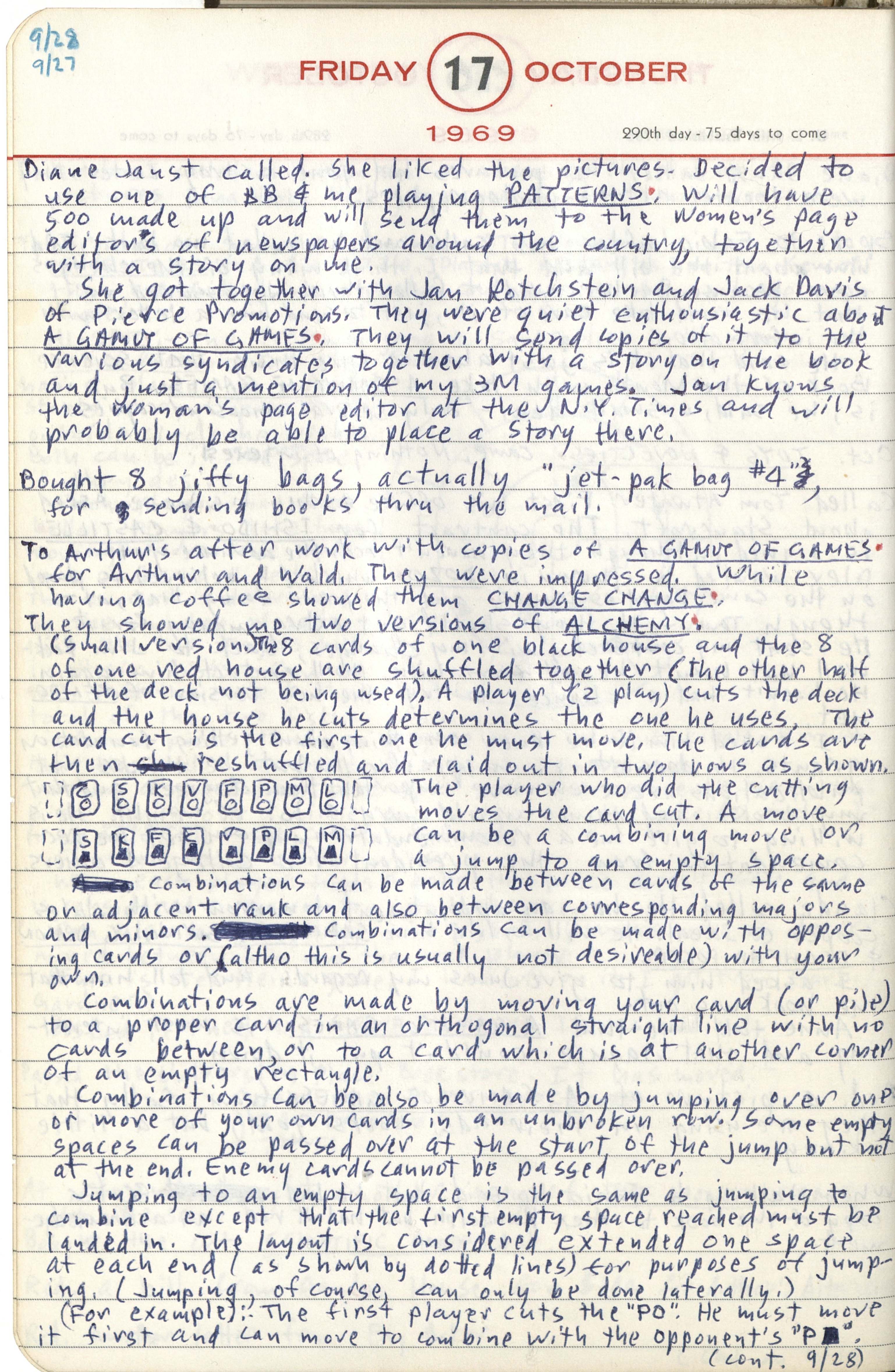1969_Sackson_310_October 17.jpg: Page #1
Original title: 1969_Sackson_310_October 17.jpg

Transcription
9/28 9/27 FRIDAY 17 OCTOBER 1969 290th day - 75 days to come
Diane Jaust called. She liked the pictures. Decided to use one of BB & me playing PATTERNS. Will have 500 made up and will send them to the Women's page editors of newspapers around the country, together with a story on me. She got together with Jan Rotchstein and Jack Davis of Pierce Promotions. They were quiet enthousiastic about A GAMUT OF GAMES. They will send copies of it to the various syndicates together with a story on the book and just a mention of my 3M games. Jan knows the woman's page editor at the N.Y. Times and will probably be able to place a story there.
Bought 8 jiffy bags, actually "jet-pack bag #4", for sending books thru the mail.
To Arthur's after work with copies of A GAMUT OF GAMES for Arthur and Wald. They were impressed. While having coffee showed them CHANGE CHANGE. They showed me two versions of ALCHEMY. (small version.) The 8 cards of one black house and the 8 of one red house are shuffled together (the other half of the deck not being used). A player (2 play) cuts the deck and the house he cuts determines the one he uses. The card cut is the first one he must move. The cards are then reshuffled and laid out in two rows as shown. [diagram of 2 rows of 8 cards each] The player who did the cutting moves the card cut. A move can be a combining move or a jump to an empty space. Combinations can be made between cards of the same or adjacent rank and also between corresponding majors and minors. Combinations can be made with oppos- ing cards or (altho this is usually not desireable) with your own. Combinations are made by moving your card (or pile) to a proper card in an orthogonal straight line with no cards between, or to a card which is at another corner of an empty rectangle. Combinations can be also be made by jumping over one or more of your own cards in an unbroken row. Some empty spaces can be passed over at the start of the jump but not at the end. Enemy cards cannot be passed over. Jumping to an empty space is the same as jumping to combine except that the first empty space reached must be landed in. The layout is considered extended one space at each end (as shown by dotted lines) for purposes of jump- ing. (Jumping, of course, can only be done laterally.) (For example):- The first player cuts the "P[circle]". He must move it first and can move to combine with the opponent's "P[trapezoid]". (cont. 9/28)